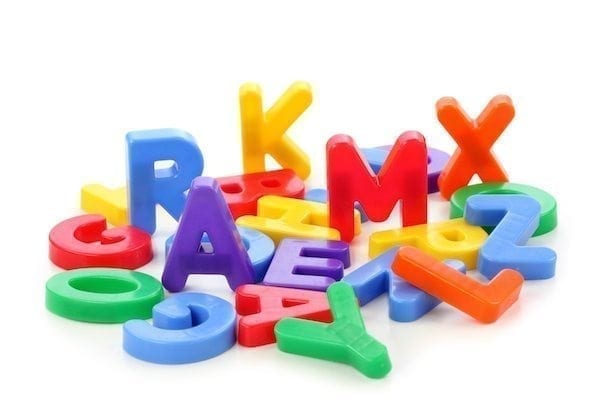When you’re a newbie to healthy living, it can often feel as though the people who’ve been doing it for a while are speaking a completely different language. With that in mind, we’ve created a list of the most common health, nutrition, and fitness acronyms to help you decode what you’re hearing at the gym or reading in the MyFitnessPal forums.
HEALTH
1. BMI: Body Mass Index A measurement that indicates obesity by calculating the relative percentages of fat and muscle in your body based on your height and weight. You cancalculate your BMI online with MyFitnessPal.
2. BMR: Basal Metabolic Rate The number of calories your body burns simply by being alive.MyFitnessPal uses this number to help you determine your basic calorie needs for the day.
3. BW: Beginning Weight MyFitnessPal users often share their BW when discussing their success in the forums. You’ll also see related acronyms like CW (Current Weight), SW (Starting Weight), and GW (Goal Weight).
4. NSV: Non-Scale Victory Things like buying smaller pants and getting off your diabetes meds are incredibly rewarding triumphs that don’t involve the scale.Read more NSVs here.
NUTRITION
5. RDA: Recommended Daily Allowance Designates the amount of a nutrient that will meet the requirements of healthy individuals.
6. DRI: Dietary Reference Intake The levels of nutrients needed for dietary consumption. They replaced the RDA in 1989.
7. GI: Glycemic Index A measure of how quickly blood sugar rises after eating a particular type of food. Foods ranking higher on the GI scale exhibit more rapid and steep spikes in blood sugar and usually contain a large amount of added sugar or refined carbohydrates.
8. SAD: Standard American Diet: A negative term describing the stereotypical American diet, which is often characterized by high intakes of red and processed meat, added sugars, packaged or fast food, and refined grains.
9. IIFYM: If It Fits Your Macros: A philosophy originally coined by body builders that is now gaining in popularity among the MyFitnessPal community. IIFYM is a flexible approach to selecting foods based on calorie and macronutrient composition that allows you to meet your nutrition goals while accommodating the occasional treat. Read more about IIFYM here.
10. ROD: Recipe Of the Day Want a healthy new recipe to try daily? Be on the lookout for the new ROD feature here on the blog, as well as the weekly ROD Roundup email newsletter. Use the hashtag #mfpROD to find ROD on social media channels.
FITNESS
11. BPM: Beats Per Minute Your heart rate is measured in BPM. Knowing this number can help you monitor how hard your body is working and how many calories you’re burning during a sweat session. You can figure out this number with a heart rate monitor or by taking your pulse (press your fingers to the back of your wrist, count the number of beats you feel in ten seconds, and then multiply by six).
12. HRM: Heart Rate Monitor A device that measures how fast your heart is beating. HRMs come in many forms: they can be strapped around your chest (and from there send data to a watch) or a hand sensor on a treadmill or elliptical machine at the gym.
13. RPE: Rate of Perceived Exertion A scale of 1 (easy) to 10 (beyond tough) that allows you to measure how hard you’re pushing yourself during a working. For example, you might give an easy walk around the block an RPE of 2, while an intense boot camp workout might deserve a solid 9.
14. AMRAP: As Many Reps As Possible Often seen in workout write-ups, AMRAP is exactly what it sounds like—do as many reps of a particular move as you can. The focus is usually on form, so it’s better to complete 5 perfect pushups than 10 sloppy ones, for example.
15. HIIT: High-Intensity Interval Training A short, but intense workout, such as Tabata drills, that combines cardio and strength training to maximize time and efficiency and give you a great workout in just a few minutes.
16. DOMS: Delayed Onset Muscle Soreness Muscle pain and stiffness that sets in 24 to 48 hours after a tough workout can be blamed on DOMS. It’s perfectly normal and is typically a sign that your body is responding well to physical exertion. Check out this post to learn more about the phenomenon and how you can ease soreness.
17. WOW: Workout Of the Week In addition to the ROD blog posts, we’ll be bringing you fun new fitness ideas or routines to try every week.
Want more? There’s a great list of acronyms in the MyFitnessPal forums.
Did we miss any? Tell us what you’d add to this list in the comments below.





3 Responses
BMI should be deleted as it’s the worst measurement for most people. Doesn’t account for people that actually workout and have a lower bodyfat %
BMI should be deleted as it’s the worst measurement for most people. Doesn’t account for people that actually workout and have a lower bodyfat %
People that workout and have a low bodyfat % are not “most people”. BMI is a fine measure for the majority of people – and the people to whom it doesn’t apply are almost always athletes who *know* they are fit.